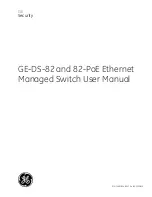
5-16
Cisco 7206 Installation and Configuration Guide
OL-5102-02
Chapter 5 Maintaining the Cisco 7206
Replacing or Recovering a Lost Password
Step 11
Scan the configuration file display looking for the passwords (the enable passwords are usually near the
beginning of the file, and the console login or user EXEC password is near the end). The passwords
displayed will look something like this:
enable secret 5 $1$ORPP$s9syZt4uKn3SnpuLDrhuei
enable password 23skiddoo
.
.
line con 0
password onramp
The enable secret password is encrypted and cannot be recovered; it must be replaced. The enable and
console login passwords may be encrypted or clear text. Proceed to the next step to replace an enable
secret, console login, or enable password. If there is no enable secret password, note the enable and
console login passwords, if they are not encrypted, and proceed to
Step 16
.
Caution
Do not execute the next step unless you have determined you must change or replace the enable, enable
secret, or console login passwords. Failure to follow the steps as shown may cause you to erase your
router configuration.
Step 12
Enter the configure memory command to load the startup configuration file into running memory. This
action allows you to modify or replace passwords in the configuration.
Router# configure memory
Step 13
Enter the privileged EXEC command configure terminal to enter configuration mode:
Hostname# configure terminal
Step 14
Change all three passwords using the following commands:
Hostname(config)# enable secret newpassword1
Hostname(config)#
enable password newpassword2
Hostname(config)#
line con 0
Hostname(config-line)# password newpassword3
Change only the passwords necessary for your configuration. You can remove individual passwords by
using the no form of the above commands. For example, entering the no enable secret command
removes the enable secret password.
Step 15
You must configure all interfaces to be not administratively shut down as follows:
Hostname(config)# interface fastethernet 0/0
Hostname(config-int)# no shutdown
Enter the equivalent commands for all interfaces that were originally configured. If you omit this step,
all interfaces will be administratively shut down and unavailable when the router is restarted.
Step 16
Use the config-register command to set the configuration register to the original value noted in Step 3
or Step 7, or to the factory default value 0x2102 as follows:
Hostname(config)# config-register 0x2102
Step 17
Press Ctrl-Z (hold down the Control key while you press Z) or enter end to exit configuration mode
and return to the EXEC command interpreter.
















































